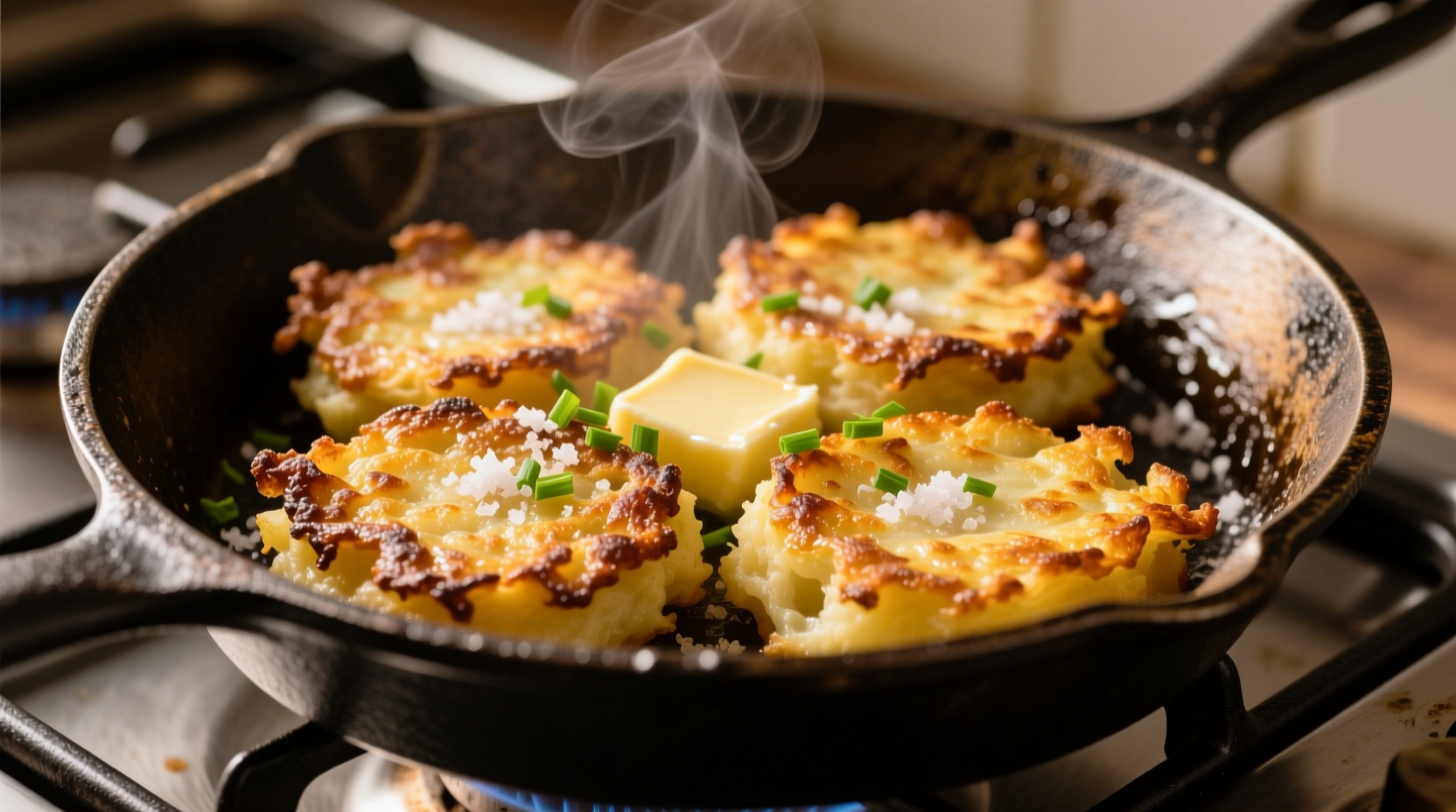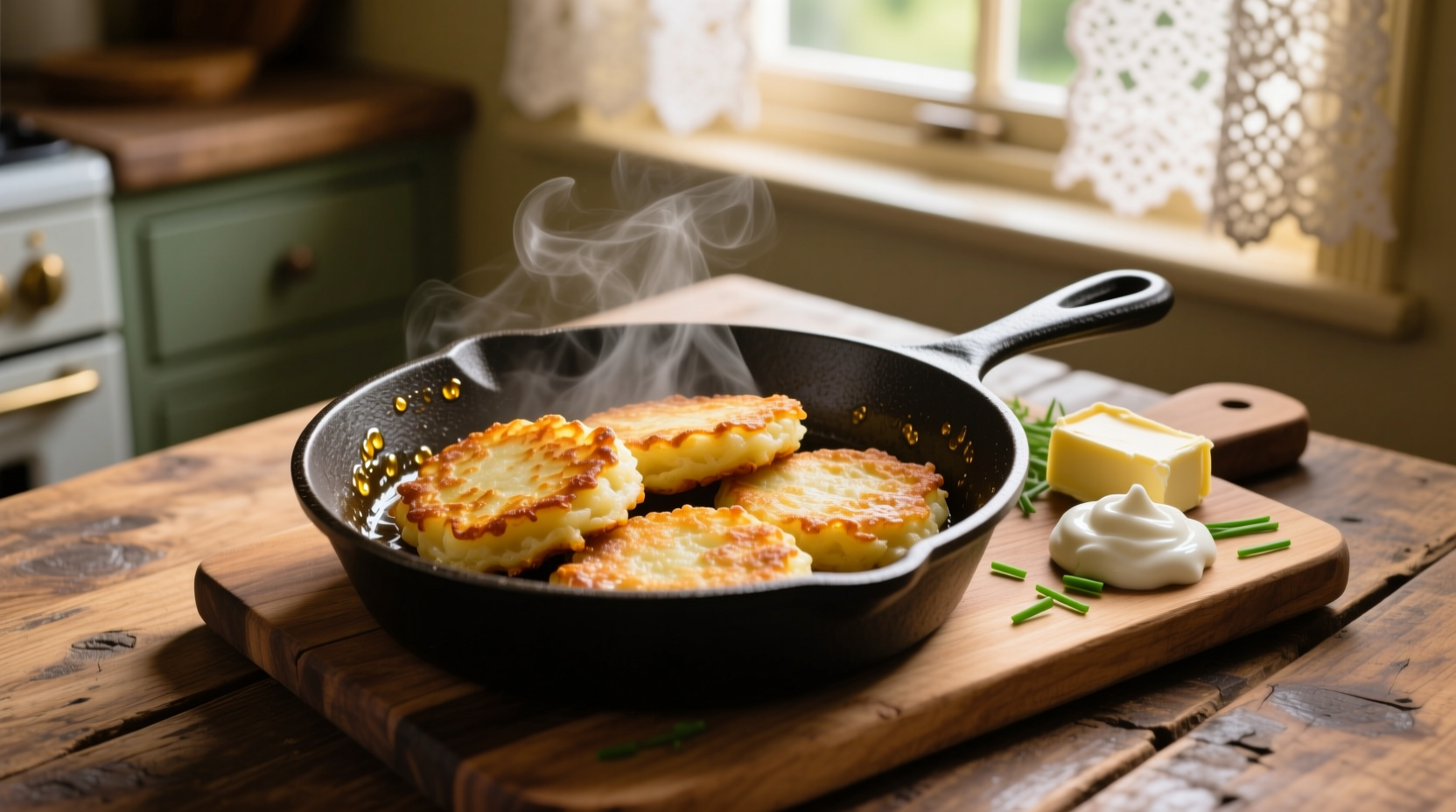Unlock the Secret to Perfect Irish Potato Cakes: History, Technique & Authentic Flavor
Master the art of making authentic Irish potato cakes with this comprehensive guide. You'll learn the precise moisture balance that prevents soggy cakes, discover regional variations from different parts of Ireland, and gain professional techniques for achieving that perfect golden crust with a tender interior. Whether you're cooking for St. Patrick's Day or exploring traditional Irish cuisine, these time-tested methods will transform your potato cakes from ordinary to extraordinary.
What Exactly Are Irish Potato Cakes?
Irish potato cakes represent one of Ireland's most resourceful culinary innovations. Unlike American hash browns or German kartoffelpuffer, authentic Irish versions combine both grated raw potato and mashed cooked potato in their batter. This dual-texture approach creates a unique contrast between the crispy exterior and fluffy interior that defines the perfect Irish potato cake.
Historical records from the Kilmainham Gaol Museum in Dublin show that potato-based dishes became widespread in Ireland following the 1845-1852 Great Famine, when potatoes represented nearly the entire diet for 40% of the population. Communities developed creative ways to prepare limited potato supplies, leading to regional specialties that persist today.
| Dish Name | Primary Ingredients | Texture | Regional Origin |
|---|---|---|---|
| Irish Potato Cakes | Raw grated + mashed potatoes, flour, buttermilk | Crispy outside, tender inside | Nationwide (variations) |
| Boxty (Báictí) | 3:1 grated:mashed potato ratio, buttermilk | Soft pancake texture | West Ireland (Mayo, Leitrim) |
| Champ | Mashed potatoes, scallions, milk | Smooth, creamy | East Ireland (Ulster) |
| Colcannon | Mashed potatoes, kale/cabbage, scallions | Chunky, vegetable-rich | Nationwide |
The Essential Irish Potato Cakes Recipe
Creating authentic Irish potato cakes requires precise moisture control—the single most critical factor determining success. Too much moisture yields soggy cakes; too little creates dry, crumbly results. Follow these steps for perfect texture every time:
Ingredients (Makes 8-10 cakes)
- 450g (1 lb) all-purpose potatoes (Russet or Maris Piper)
- 115g (1 cup) all-purpose flour
- 1 large egg, lightly beaten
- 60ml (¼ cup) buttermilk
- 5ml (1 tsp) baking soda
- 3ml (½ tsp) salt
- 30g (2 tbsp) unsalted butter
- 30ml (2 tbsp) vegetable oil
Step-by-Step Preparation
- Potato preparation: Peel and coarsely grate 225g (½ lb) potatoes. Place grated potatoes in a clean kitchen towel and squeeze firmly to remove excess moisture—this step is crucial for crispiness.
- Cook remaining potatoes: Boil the other 225g (½ lb) potatoes until tender. Drain well, then mash until completely smooth with no lumps.
- Combine ingredients: In a large bowl, mix grated potatoes, mashed potatoes, flour, baking soda, and salt. Add beaten egg and buttermilk, stirring until just combined (do not overmix).
- Rest the batter: Let mixture rest for 15 minutes—this allows flour to hydrate properly and improves texture.
- Cooking technique: Heat butter and oil in a cast-iron skillet over medium heat. Drop ⅓ cup portions of batter into skillet, flattening slightly to 1.5cm (½ inch) thickness.
- Cooking time: Fry 4-5 minutes per side until deep golden brown. Adjust heat as needed to prevent burning while ensuring thorough cooking.

Pro Techniques for Perfect Results
Professional Irish chefs emphasize three critical factors that separate good potato cakes from exceptional ones:
Moisture Control Mastery
The moisture ratio between raw and cooked potatoes determines final texture. Research from the Technological University Dublin's School of Culinary Arts shows that a 1:1 ratio of raw to cooked potato by weight yields optimal results. Excess moisture causes cakes to steam rather than fry, resulting in greasy, dense texture.
Temperature Precision
Start with a properly preheated skillet (175°C/350°F). When batter hits the pan, it should sizzle immediately but not smoke. The Irish Food Board (Bord Bia) recommends testing with a small batter drop—if it sinks, the oil is too cold; if it browns instantly, it's too hot.
Avoiding Common Mistakes
- Overmixing: Creates tough cakes—stir batter until just combined
- Pressing down: Compresses cakes—flip only once with a thin spatula
- Overcrowding: Lowers pan temperature—cook in batches
- Incorrect potato variety: Waxy potatoes contain less starch—use starchy varieties
Regional Variations Across Ireland
Irish potato cakes aren't monolithic—regional adaptations reflect local ingredients and traditions. Understanding these variations helps you appreciate the dish's cultural significance:
Evolution of Irish Potato Dishes
- Pre-1800s: Potatoes introduced to Ireland (1590s), gradually becoming dietary staple
- 1845-1852: Great Famine forces creative potato usage; basic potato cakes emerge
- Late 1800s: Regional variations develop as communities adapt to local conditions
- Early 1900s: Boxty becomes signature dish of West Ireland, particularly Mayo
- Mid-1900s: Potato cakes gain popularity beyond Ireland through Irish diaspora
- Present: Modern chefs reinterpret traditional recipes while preserving core techniques
West Ireland: Boxty Tradition
In County Mayo and Leitrim, boxty follows a strict 3:1 ratio of grated to mashed potato, creating a softer pancake-like texture. The Mayo County Council's cultural archives document traditional boxty being cooked on a griddle called a 'blaíon' over open fires.
East Ireland: Champ Influence
In Ulster regions, potato cakes often incorporate scallions (known as 'sceallóg' in Irish), reflecting the influence of champ. This variation typically uses less flour and more buttermilk for a softer texture.
Serving Traditions and Pairings
Understanding when and how Irish potato cakes are traditionally served enhances authenticity:
Traditional Accompaniments
- Full Irish breakfast: Served alongside bacon, sausages, black pudding, and fried eggs
- With smoked salmon: A modern adaptation popular in Dublin cafes
- With stew: Used as a side to soak up rich meat broths
- As a standalone: Simply topped with butter and salt for a humble meal
Seasonal Context
According to Irish culinary tradition documented by the Kilkenny County Council, potato cakes were historically most common during potato harvest season (August-October) when fresh potatoes were abundant. Today they're enjoyed year-round but remain particularly popular during colder months.
Storage and Reheating for Best Results
Proper storage maintains texture for future enjoyment:
- Refrigeration: Store cooled cakes in airtight container for up to 3 days
- Freezing: Layer between parchment paper, freeze up to 2 months
- Reheating: For best results, re-crisp in 190°C (375°F) oven for 8-10 minutes rather than microwave
- Avoid: Storing while still warm (creates condensation and sogginess)
Frequently Asked Questions
Can I make Irish potato cakes without buttermilk?
Yes, substitute buttermilk with regular milk mixed with 15ml (1 tbsp) lemon juice or white vinegar. Let it sit for 5 minutes to thicken before using. The acid helps activate baking soda for proper rise while mimicking buttermilk's tangy flavor.
Why do my Irish potato cakes fall apart when frying?
This typically indicates insufficient binding ingredients or excess moisture. Ensure you've squeezed all possible liquid from grated potatoes and use the correct flour ratio (115g per 450g potatoes). Letting the batter rest for 15 minutes before cooking allows flour to absorb moisture properly.
What's the difference between Irish potato cakes and latkes?
Irish potato cakes use both grated raw and mashed cooked potatoes with buttermilk and baking soda, creating a lighter texture. Latkes are made exclusively with grated raw potatoes, often include onion, and rely on eggs as the primary binder without leavening agents, resulting in a denser, more compact pancake.
Can I make gluten-free Irish potato cakes?
Yes, substitute all-purpose flour with a gluten-free 1:1 baking blend. Increase mashed potato by 30g to improve binding. Some traditional Irish recipes from Kerry actually use oat flour, which works well as a naturally gluten-free alternative while maintaining authentic flavor.











 浙公网安备
33010002000092号
浙公网安备
33010002000092号 浙B2-20120091-4
浙B2-20120091-4